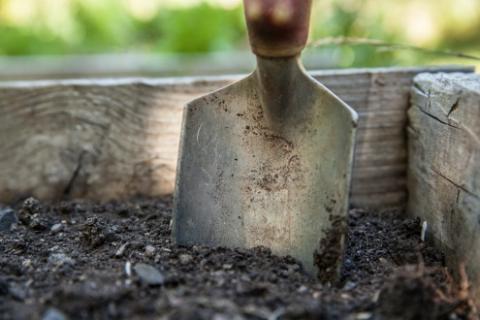I had my soil tested...but what do the results mean?

Given the way this winter has gone so far, it’s possible the ground will thaw soon if it hasn’t already. That gives gardeners a prime opportunity to take their spring soil samples earlier than normal. But, sending in the sample is only the first step, next you will need to make sense of the results that come back.
When you receive your results, the first thing to look at is the pH of your soil. pH measures acidity and the number seven represents neutral. Anything below a seven means your soil is acidic; anything above a seven means your soil is alkaline. Plants generally prefer slightly acidic soils with pH values between six and 6.5. Of course there are some notable exceptions such as blueberries, which thrive at pH levels between 4.5 and five.
If your soil pH is out of line with what you want to grow, you can add lime to increase the pH or sulfur to decrease it. The recommendations section of your soil test result sheet will tell you what and how much you need.
Next you want to look at the nutrients. Three of the most important plant nutrients are nitrogen, phosphorus, and potassium.
Nitrogen levels change quickly in the soil and aren't easy to test accurately. UNH doesn’t test nitrogen, instead, we make recommendations on how much nitrogen fertilizer to add based on what your crop needs.
Organic matter contains nitrogen. The soil test will tell you the percentage of organic matter you have in your soil and will “credit” you a certain amount of nitrogen for it. This will minimize the risk of applying excess nitrogen which might then wash out of your soil and into surrounding waterways.
Phosphorus levels in the soil tend to be high here in New Hampshire, particularly if your garden has received a lot of compost or manure in the past. This is because when you supply the right amount of compost and manure to meet the crops nitrogen needs for the year you also put on more phosphorus than you need. If the level in your soil is excessive you will likely get a recommendation to limit or even stop your use of manures and composts until the levels start to come back down.
High levels of phosphorus in the soil are a concern primarily because the phosphorus could wash into waterways causing excess algae growth. If your phosphorus levels are too high, the best thing you can do is to keep plants growing in that spot to use up the phosphorus and minimize the risk of erosion.
Potassium helps your plants resist drought and may be low in your soil depending on how you or previous owners have historically used the land. If that is the case, the recommendations will tell you how much potassium to add and give you some examples of products that contain it.
Calcium and magnesium are also considered major plant nutrients. Magnesium helps your plants photosynthesize and calcium is important for plant growth. Lime products contain calcium and in some cases magnesium. Other products may also be used if you need calcium or magnesium but don't need to adjust your pH. In fact, if your grandparents used Epsom salts in their garden, they were most likely trying to increase the amount of magnesium in their soils.
Finally, your soil test will also give you a value for the amount of lead in your soil and tell you whether or not that level is potentially harmful. Old landfills, factory sites or gardens near older homes with lead paint on the siding are the most likely places to find high levels of lead.
If you have any questions or concerns about your soil test results, call the Infoline at (877) 398-4769.
